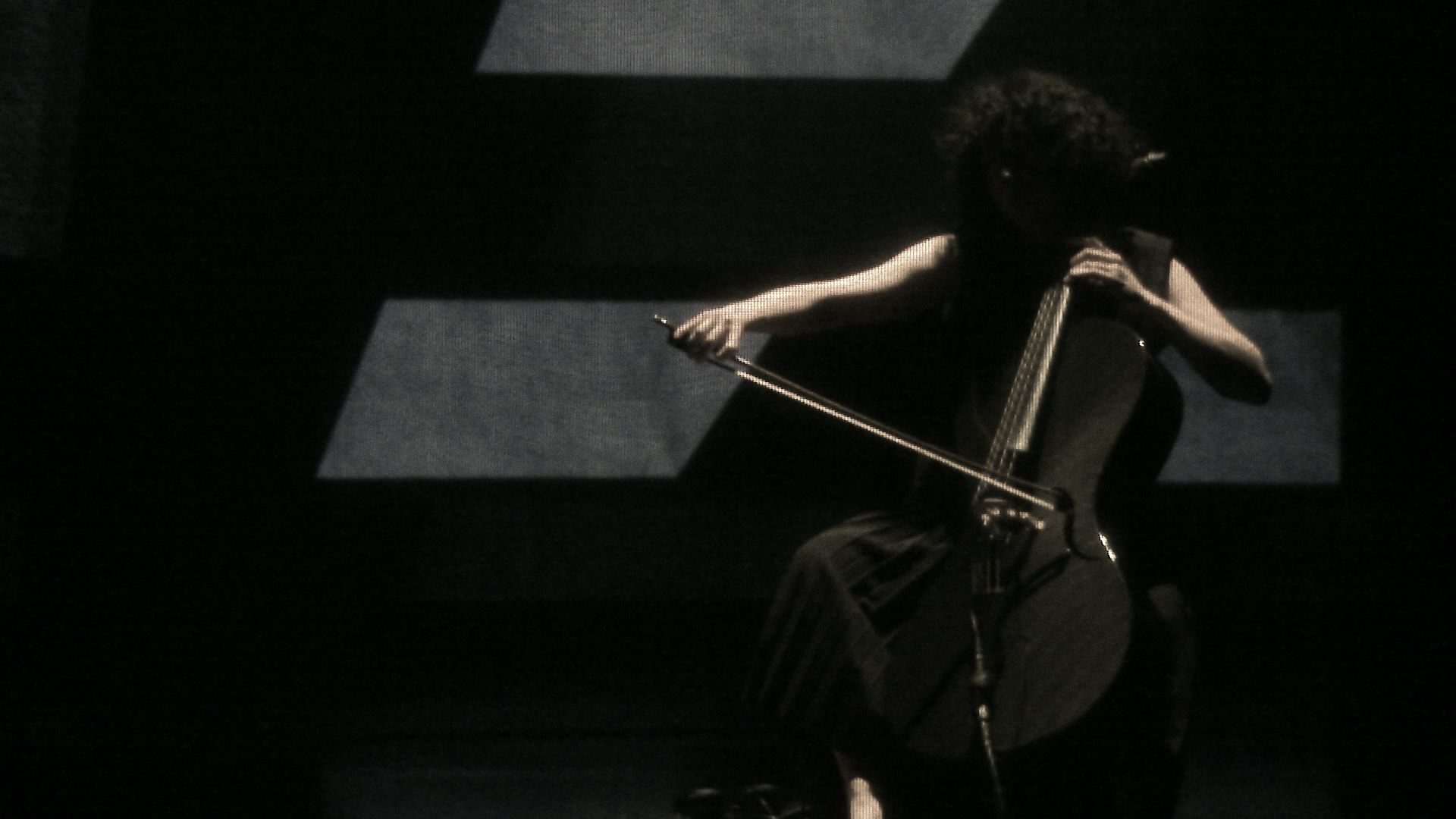
Album release date: April 6, 2018 (Miasmah Recordings)
Listen: Amazon | Bandcamp | Apple Music | Spotify | Miasmah | iTunes
For this from that will be filled, a collaboration between Ms. Jensen and the artist Jonathan Turner, explores the variable differences between acoustic and electronic sound and simulated and unconscious depiction. Through repetition and layering a non-codified and obscured emotional response is solicited.
Building on a long and romantic tradition of solo cello repertoire, Jensen expands and confuses the familiar sound of solo cello through the use of effects pedals, multi-tracking, and tape loops recorded at variable speeds, presented in works she has written for herself as well as a piece she conceived of with Icelandic composer Jóhann Jóhannsson. Also featured is Michael Harrison’s Cello Constellations for multi-tracked cello and sine tones, written for Ms. Jensen, which meditates on long tones sustained on the acoustic cello among sine tones in an expansive experience of the harmonic series.
This music accompanies visual projections by Turner that connote a structure of unknown scale or place, and conjure the simulated presence of the viewer/listener within this interior, suggesting an experience inside an environment of which the texture and design draw from domestic and commercialized aesthetics, overbearing in their glossy blandness. Populating this lonely interior are a several distorted and deforming feminine figures that, along with Jensen’s presence as performer, serve as sirens in the void.
In combining these elements, an experience is created that is not explicit in message or emotion or journey, as those specifics are voided through the repetitive nature of the compositions, the foreign nature of the cello sound, and the disorienting pace through Turner’s nebulous interiors.
“There is an ancient saying that the sense of a vessel is not in its shell but in the void. So it is with this room. It is for those who come here to fill the void with what they find in their center of stillness.” - Dag Hammarskjold




Composer Michael Harrison's program note for Cello Constellations
1. The Harmonic Opening Constellation (ascending parallelogram, fundamental 64 Hz.) and the Magic Constellation (descending parallelogram, fundamental 63 Hz.)
2. Harmonic Cascades (fundamental 64 Hz.) and the Harmonic Constellation (ascending parallelogram, fundamental 64 Hz.)
3. The Harmonic Opening Constellation (ascending parallelogram, fundamental 72*(64/63) Hz.) and the Magic Constellation (descending parallelogram, fundamental 72 Hz.)
Cello Constellations was commissioned by cellist Clarice Jensen and is scored for solo cello with 14 pre-recorded cellos and sine tones. The work was premiered by Jensen, with visual media by Jonathan Turner, at The Kitchen in New York City in May 2017.
The work is comprised of five constellations and eight harmonic cascades of complex just intonation harmonies that gradually evolve over time. The frequency relationships between each tone are perfectly tuned in whole number proportions. These same proportions are used to determine the timing and envelopes (fade in, sustain, and fade out) of each note, resulting in an organic relationship between pitch, rhythm and duration. I am calling this compositional technique “Integrated Proportionality.”
Because all of the tones in Cello Constellations are tuned in extended just intonation the music creates a geometric formation of periodic composite waveforms. This can be experienced as a sonic hologram in which the listener can move, or slightly shift the position of their head, to hear different tones in every part of the room. In this way the listener becomes an interactive participant, and unless headphones are used, the work will never be heard the same way twice.
The rhythmic pulsations heard in the work are the result of interference patterns perceived by the brain as acoustical beats. When we hear two sounds of slightly different frequencies, an acoustical beat is perceived as a periodic variation in volume whose rate is the difference of the two frequencies. Because each constellation includes between seven and thirty tones, and the constellations overlap with each other, the acoustical beats continually shift and evolve over time.
Cello Constellations was composed using math and text based computer programming. The data was then organized into spreadsheets to create a more traditional score with the just intonation ratios and exact frequency specified in Hertz above each note. All of the tones were divided between the cellos and sine tones to create an integrated timbre.
Although the work is related to the concept of total serialism, the compositional technique is fundamentally different in that the interrelationships are derived from the frequencies of the notes themselves, rather than correlations with a 12-tone row or set of pitches. Since all the pitches used in the standard equal tempered tuning are multiples of the 12th square root of two, the resulting intervals, except the octave (2:1), have frequency relationships with irrational numbers rather than whole number proportions. Frequency relationships with irrational numbers produce non-repeatable non-periodic waveforms, and since the pitch relationships of total serialism are primarily in equal temperament, the interrelationships are generally not derived from the frequencies of the notes themselves.